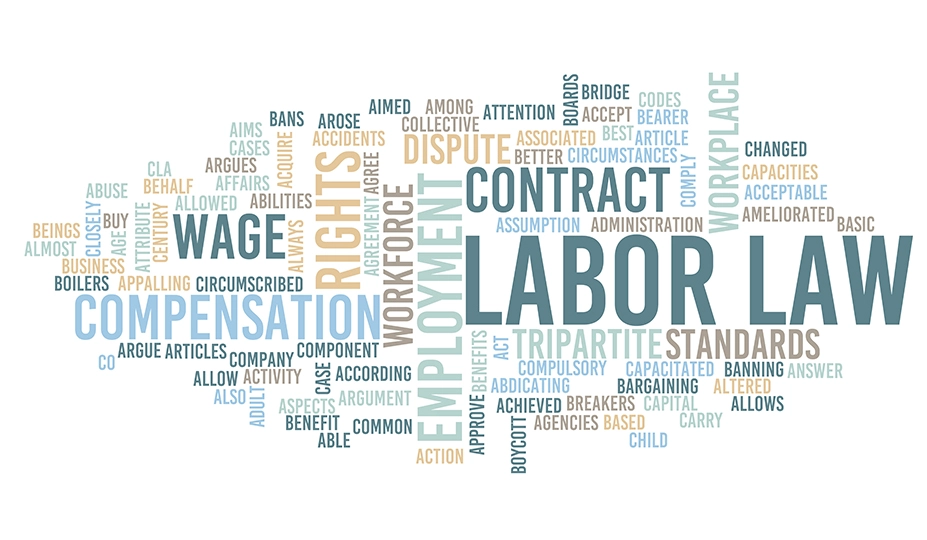Wage levels in China have increased steadily over the last decade; driven by rapid economic growth and declining population growth. Fewer young people are entering the workforce and those that do have higher expectations. Workers have become better organized and employers in many sectors have been forced to pay higher wages in order to recruit and retain staff.
There has been near double digit growth in the national average annual wage for urban employees since 2004, according to China's National Bureau of Statistics, with the average wage reaching 56,339 yuan in 2014 (around US$9,000). See chart above. By 2012, many commentators had already declared the end of cheap labour in China. However, these headlines and the official statistics mask huge disparities between different industries, geographic regions, urban and rural areas, as well as between senior managers and ordinary workers. The minimum wage in China has never been a living wage, and employees on the minimum wage usually have to rely on excessive overtime and production bonuses just to get by. Moreover, as economic growth has slowed in recent years, more and more businesses are defaulting on wage payments in a blatant violation of the Labour Law.
The Regulations state that regional governments should determine and adjust the monthly minimum wage for full-time workers with reference to:
• Minimum living costs of local employees and their dependents
• The consumer price index for urban residents
• Social security and housing fund contributions paid by individual employees
• The average wage of employees in the locality
• Level of economic development and the supply and demand of labour in the locality.
There are substantial differences in minimum wage levels across China, ranging from more than 2,000 yuan per month in the major financial centres of Shanghai and Shenzhen down to as little as 850 yuan per month in the poorer, more remote cities such as Yichun in north-eastern Heilongjiang, and 1,000 yuan per month in the rural county towns of Guangxi in the south-west. As of 1 July 2015, the monthly minimum wage in the Pearl River Delta manufacturing centres of Dongguan, Foshan and Zhongshan was 1,510 yuan, while the rate in the sprawling inland metropolis of Chongqing was only 1,250 yuan per month.
The 2004 Regulations recommend that regional governments adjust their minimum wage at least once every two years (Article 10). However, in the wake of the 2008 global economic crisis, the central government in Beijing announced a freeze on all minimum wage increases, which stayed in effect until 2010. From 2010 to 2012, high inflation and increasingly vocal demands for higher wages pushed the minimum wage up by around 22 percent each year on average. Since 2012 however, the rate and frequency of increases has slowed. In 2014, just 20 regions raised their monthly minimum wage by an estimated average of 13.1 percent (see chart below), and if the 12 regions where there was no increase are factored into the national average, the increase for 2014 falls even further to just 8.2 percent. Overall, however, China does seem on track to meet the 12th Five-Year-Plan (2011-15) target of increasing the minimum wage by an average of 13 percent each year.
Internationally, China's minimum wage (in coastal cities at least) is now in the mid-range of Asian countries. See table below. Although wage levels are in general still far below those in Japan, South Korea and Singapore, wages for Chinese factory workers are now significantly higher than for factory workers in Bangladesh, Vietnam and Cambodia. This has led to many low cost, labour intensive industries such as garments, toy and shoe manufacturing transferring some production to these cheaper locations, and in many cases replicating the pay and working conditions in China a decade earlier.
Income inequality
The minimum wage should be set at between 40 and 60 percent of the average wage in each region, according to the 2004 Regulations. However, the minimum wage level in the majority of Chinese cities has all too often failed to reach even 40 percent. Based on average wage figures for the first quarter of 2015 complied by the recruitment company Zhaopin, the minimum wage ranged between just 25 percent 30 percent of the average wage in six selected cities – three with a high minimum wage and three with a relatively low minimum wage.
The current proportion of around 30 percent has remained more or less constant for the last five years, indicating that although wages have increased across the board, China's lowest paid workers are still lagging behind. The wages of rural migrant workers, in particular, have been consistently lower than the national average. A survey conducted by the National Bureau of Statistics estimated that the average monthly wage for migrant workers in 2014 was 2,864 yuan, up 9.8 percent from 2,609 yuan in 2013, a slightly lower rate of increase than in previous years. A comparison of migrant worker average wages in manufacturing, construction, hotels and catering, and household services in 2014, with the salaries for white-collar workers in banking, securities and investments, intermediary services and accounting in the final quarter of 2014 showed that on average, white collar workers earned about 2.5 times more than migrant workers.
There are of course substantial differences in pay levels within each sector as well. It is difficult to obtain reliable and comprehensive data on the range of wages in each sector but one academic study showed that pay for top executives in 2010 was about ten times the average wage. In major state-owned enterprises, the pay gap was even wider with top executives earning around 700,000 yuan on average in 2011, about 16 times the average wage of SOE employees that year. Executives in the banking sector could earn much more, up to two million yuan in some cases. In August 2014, however, the Chinese government ordered pay cuts for top SOE executives, with salaries reportedly capped at 600,000 yuan a year.
In terms of disposable income, the gap between China's rural poor and the urban elite has remained fairly constant over the last five years, according to official statistics. In 2013, the per capita net or disposable income for the poorest 20 percent of rural households was 2,583.20 yuan, compared with 56,389.50 yuan for the richest 20 percent of urban households (see chart below), a difference of 22 times. Five years earlier in 2009, the difference was reportedly 24 times, with the per capita net income for the poorest 20 percent of rural households standing at 1,549.30 yuan, and the disposable income of the richest 20 percent of urban households at 37,433.90 yuan.
The urban-rural divide is probably the most important factor in wealth inequality in China today, not simply because of the income gap but because nearly all of China's best healthcare, education, cultural and social services are located in urban areas. Whereas urban residents have reasonably unfettered access to such services, rural residents often have to pay excessive fees on top of the cost of travelling to and staying in the city that provides the services.
Wage arrears
The deliberate non-payment, delayed payment or partial payment of wages is a serious, long-standing and widespread problem in China; particularly in the construction and manufacturing industries, but also increasingly in the mining industry and services such as retail, hospitality and education.
A survey of construction workers in five Chinese cities conducted in 2013 showed that overall just 20 percent of construction workers got paid on a regular monthly basis, while in the capital Beijing the rate was as low as 5.5 percent. The most common practice was for workers to be paid a portion of their salary for daily expenses and the remainder of the salary on completion of the project. In many cases, however, workers who were owed wages only got a small proportion of what they were owed or were only paid the local minimum wage rather than the rate for skilled labour originally agreed.
. The situation worsened further in 2014 as the economy slowed and the property market slumped dramatically. Developers were saddled with declining sales, weaker credit availability and continued pressure from local governments to buy land. In these situations, because of the multiple lawyers of sub-contracting in the construction industry, it was the workers who were always the last to be paid.
CLB's strike map shows a marked increase in construction worker protests from August 2014 onwards right up to the Lunar New Year Holiday, traditionally the peak period for wage arrears demands in China. From August 2014 to February 2015, there were 473 construction worker protests recorded on the strike map, with 128 in February alone, accounting for more than half of all worker protests that month. See chart below. The vast majority of these disputes were related to wage arrears.
In the manufacturing industry as well, there has been a definite increase in the number of wage arrears cases since early 2014. The majority of these protests are in the traditional manufacturing centres along the southeast coast, especially the Pearl River Delta, where factories are struggling to stay afloat as the economy slows, and prices and demand falls.
The response of central and local governments to this long-standing problem has traditionally been to wait until just before the New Year Holiday and then put pressure on delinquent bosses to pay their workers – a highly inefficient and superficial endeavour that fails to address the root of the problem. Criminal sanctions for the malicious non-payment of wages were introduced in the 2011 Amended Criminal Law but few successful prosecutions have so far been made. In 2015, the Guangdong provincial government proposed specific new legislation under which delinquent bosses could face fines of up to 200,000 yuan but again it is difficult to see how this will be effectively enforced.
Unemployment
Despite marked fluctuations in the economy and serious contractions in the manufacturing and construction industries, China's official unemployment rate has remained remarkably stable over the last five years. See chart below. In 2014, the unemployment rate was 4.09 percent, up from 4.05 percent in 2013. Even in the economically depressed rust belt of Heilongjiang, the official unemployment rate is still only around 4.4 percent. This is because the official rate only refers to the proportion of registered urban job-seekers to the total number of employed urban workers. It ignores all rural workers and rural migrant workers, foreign workers, as well as those in insecure, part-time or casual work.
The official unemployment rate is not a very useful or reliable indicator of employment levels in China. Moreover, the key employment issue in China is not the unemployment rate per se but rather the extent to which workers can find decent jobs and employers can find the staff they are looking for to develop their business. This problem is highlighted in microcosm every summer in China when an ever increasing number of graduates start looking for employment. In 2015, about 7.5 million graduatesentered a job market with high expectations but little chance of finding a suitable position. The mismatch between the needs of graduate job seekers and employers has been well-documented and highly publicised over the last few years but there are few signs the situation is improving. The current administration of Premier Li Keqiang hopes a new spirit of entrepreneurship, exemplified by Beijing's hi-tech hub in Zhongguancun, will be the solution to graduate and wider unemployment but the experience of the USA and other developed countries suggests that such entrepreneurship generally worsens rather than improves labour relations.
Graduates however make up only a tiny proportion of China's overall workforce of around 780 million. A far more serious problem is lack of decent employment opportunities for China's middle-aged and elderly workers. Age discrimination is deeply ingrained in the workplace in China and unskilled and low-skilled workers in particular find it increasingly difficult to secure employment after the age of 40. As their physical strength, stamina and alertness declines, older workers are often excluded from relatively higher paying jobs on the factory production line, and other labour intensive positions because employers think they will slow other employees down and reduce productivity. Many older workers can only get low paid and irregular jobs in small family workshops or as security guards, sanitation workers, hospital porters etc. One exception to this rule however is the construction industry which is struggling to recruit younger workers and as a result is being forced to hang on to an increasingly elderly workforce.
To make matters worse, many elderly workers do not have a pension and have to seek additional work after they reach the retirement age just to get by. However, workers who are beyond the statutory retirement age are not necessarily protected by the Labour Contract Law. In July 2013, for example, five sanitation workers in the southern city Foshan were denied wages, overtime and social insurance in arrears by the local arbitration committee because they were over the statutory retirement age and regarded as service providers rather than formal employees. This legal limbo puts elderly workers at even greater risk of exploitation because they have little legal recourse if they are cheated out of wages or injured at work.
Analysis and conclusion
The popular contemporary narrative of the end of cheap labour in China obscures what is in reality a highly complex issue. Wages have certainly risen, dramatically in some cases, especially when compared with the largely stagnant or even negative wage growth in most developed countries over the last decade. However, China's recent wage increases began from a very low base and actual wages are still far below those in major developed economies. The average monthly wage in Japan in mid-2015, for example, was around US$2,400, compared with roughly US$750 in China.
Wealth inequality is regularly cited in opinion polls in China as the country's most pressing social issue, along with corruption, which of course is directly related to wealth inequality. So far however, the government's efforts to improve conditions for the lowest-paid and rein in executive pay have had a limited impact.
Increases in the minimum wage have barely kept pace with overall pay increases, while for many low-paid workers the overtime, subsidies and bonuses they rely on to earn a decent living are whittled away soon after any increase in their basic pay. In addition, as the manufacturing sector shrinks, factory workers have been laid-off without proper compensation or the social-insurance payments they were legally entitled to.
The lack of social insurance coverage for China's low-paid workers is one of the main reasons why wage increases have failed to really improve their lives. Without a pension or decent health insurance, workers often have to save whatever they can in bank deposits, wealth management schemes or the high-risk stock market in order to try to secure their future. This means that working families have little to spend on goods and services that could both improve their standard of living and boost the local economy through domestic consumption.
Wage growth, by itself, is clearly not enough to reduce income inequality and improve the lives of ordinary workers in China. In addition to a decent wage, workers need a safe working environment and a social welfare safety net to ensure that their entire life savings are not at risk when they retire, are badly injured or unemployed for a long period of time.
The rural-urban divide, exacerbated by China's antiquated and discriminatory household registration system, remains one of the pressing challenges for the Chinese government. However, there are signs that development of the rural hinterland is bringing some benefits. Smaller and, to some extent, medium-sized cities have already started to relax their administrative barriers to rural migration. And as these cities become a more viable option for migrant workers, there are likely to be fewer migrants seeking a place in larger cities. This in turn will make it easier for big city governments to integrate their existing migrant population into their social welfare, healthcare and education systems.
Income inequality is likely to remain a serious problem in China for years, even decades to come, but if workers are allowed a greater say in determining their own pay and working conditions and the Chinese government can implement effective social security reform, there is a chance that the situation may begin to improve.








